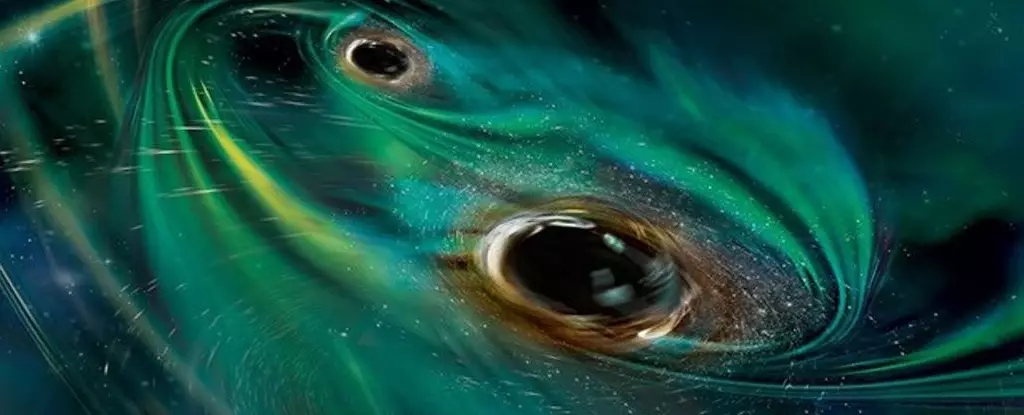In March 2021, astronomers turned their attention to a distant galaxy where a tantalizing high-energy burst of light—the object now known as AT 2021hdr—was detected. Initially classified as a supernova, the luminous event quickly captivated researchers with peculiar features that prompted further investigation. Utilizing sophisticated algorithms from the Automatic Learning for the Rapid Classification of Events (ALeRCE) project, astronomers flagged this event as worthy of deeper scrutiny.
The saga continued into 2022 when another outburst was recorded, reinforcing suspicions of an unusual cosmic phenomenon. The Zwicky Transient Facility (ZTF) then uncovered that this burst pattern recurred every 60 to 90 days, indicating a regularity that contradicted the chaotic nature typically associated with supernovae. This sparked intrigue among scientists regarding the true nature of AT 2021hdr.
Initially, one hypothesis proposed that AT 2021hdr was a tidal disruption event (TDE), a scenario in which a star ventures too close to a black hole, leading to its disintegration and resultant bursts of energy. However, the patterned nature of the outbursts presented a challenge to this theory, as TDEs generally exhibit irregularities rather than the consistent intervals observed in this case.
In pursuit of an explanation, researchers turned their attention to a more complex model involving the dynamic interactions between binary black holes. New simulations suggested that when a massive interstellar cloud enters the gravitational influence of such black holes, the merger could create a distinctive oscillation of light. This churning effect, rather than a mere disruption, could cause periodic emissions as the black holes consume the cloud and interact with one another.
Utilizing the Neil Gehrels Swift Observatory, scientists probed deeper into the characteristics of AT 2021hdr and were greeted with pivotal findings. They detected oscillations in ultraviolet and X-ray emissions that closely matched the bursts recorded by the ZTF. Such a correlation presented compelling evidence supporting the binary black hole model.
The researchers deduced that the two black holes at the center of this cosmic phenomenon have a combined mass of approximately 40 million times that of our Sun and engage in orbits around each other every 130 days. Interestingly, their paths suggest that in roughly 70,000 years, these black holes will collide, creating yet another spectacular astronomical event. This discovery raises profound questions about how cosmic entities evolve over astronomical timescales and the role such events play in the broader structure of the universe.
Looking Forward: Future Exploration
The implications of this research extend far beyond a single cosmic event. As the team plans continued observations, they aim to refine their models further and explore how these newly identified black holes interact with their host galaxy. They hope to deepen our understanding of both individual black holes and their collective behavior, providing insights into the fabric of our universe.
While AT 2021hdr stands as a landmark case study, it hints at a treasure trove of uncharted phenomena waiting to be explored in the vast expanse of the cosmos. Each new finding enriches our understanding yet also unveils the myriad mysteries that continue to challenge and inspire astronomers around the globe.



Leave a Reply